At a Museum of Memories

The Wing Luke Museum in Seattle (Source: South Seattle Emerald)
His belief in the constancy of place comes from his seven years as the executive leader for the East Hawaii Contemporary Arts Center, Kalanihonua Retreat Center, and Touching the Earth on Hawai’i Island. “In Hawai’i indigenous thinking, what’s below the concrete, is relevant to what’s happening to the people above it. My investigation goes back to who were the original families and what were the water systems,” he says.
Enter the Dragon
Water has special significance because of this summer’s fourth installment of the Wing’s Bruce Lee exhibit titled A Dragon Lives Here. Before going to his final resting place in Seattle’s Lake View Cemetery, Bruce Lee was known to have said, “The key to immortality is first living a life worth remembering.” His philosophy for living a worthwhile life was best encapsulated in his reflection on water:
"Be Water, My Friend.
Empty your mind.
Be formless, shapeless, like water.
You put water into a cup, it becomes the cup.
You put water into a bottle, it becomes the bottle.
You put it into a teapot, it becomes the teapot.
Now water can flow or it can crash.
Be water, my friend."
“We should all be like water,” recommends Mr. Tan before returning to his relationship with land and place.
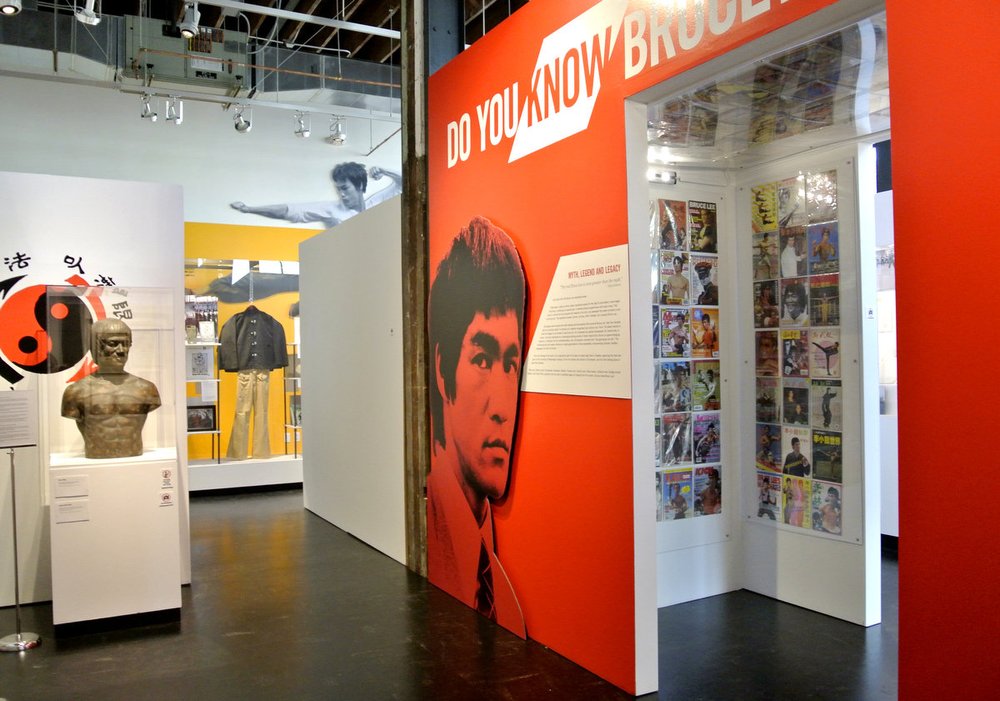
The Bruce Lee Exhibit (Source: WingLuke.org)
Original Nephew of Uncle Bob
When Mr. Tan speaks of every Fil-Am’s common identity as settlers, he need only look outside his office window to Uncle Bob’s Place, a low-income housing development to be completed later this year. During his tenure in the Seventies as the executive director of the International District Improvement Association, Robert “Uncle Bob” Santos became known for his prescient fight against construction of the Kingdome sports stadium south of the nearby King Street Train Station.
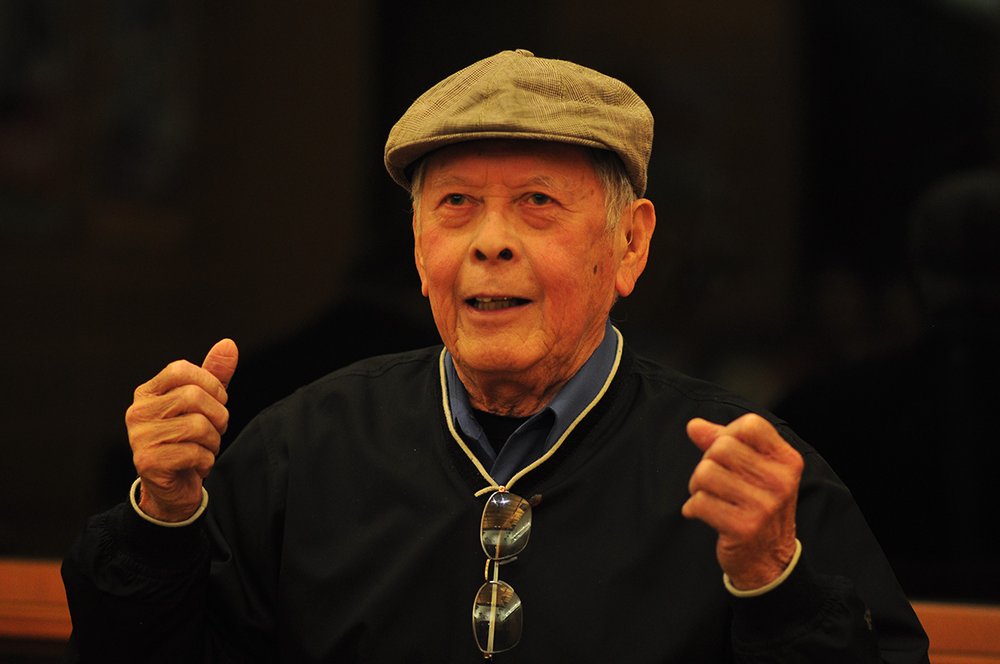
Bob Santos (Source: Wikimedia.org)
The Kingdome came, and after the cement behemoth was dynamited on March 26, 2000, the chain reaction gifted Seattle’s white-collar Amazons and fellow nouveau riche with Lumen Field, home of the Seattle Seahawks; and T-Mobile Field where the Seattle Mariners play. Those lucrative sports teams accelerated gentrification of the CID and displacement of the area’s elderly and immigrant communities.
Uncle Bob came from Seattle’s lowkey Filipino Town. Mr. Tan says, “Uncle Bob’s resilience was a Filipino trait that originated from a country that endured wave after wave of colonizers.”
Anti-Fragile
Mr. Tan goes on to link the avuncular community activist with a trait intrinsic to the Filipino character. “Filipinos as a people have beaten insurmountable odds with a sense of humor. We have the ability to maintain a sense of humor in terrible circumstances because half an eternity of oppression has hardened us into what I call ‘anti-fragile,’ which is the polar opposite of fragile. We have the strength to keep showing up no matter what. The more you [mess] with us, the more we come back!”
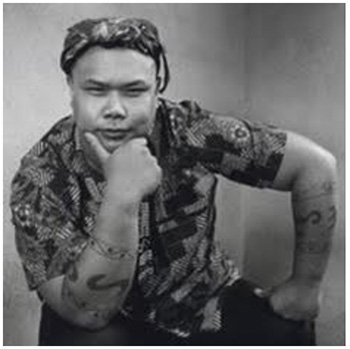
Joël B. Tan: A 1996 Portrait by (late) Robert Giard in NY Public Library Collection
It doesn’t take long for a listener to realize that Mr. Tan’s discourse on land is a device for segueing into social issues. As far back as his undergraduate years in Ethnic Studies at the University of California, Berkeley, he has been an advocate of the arts, economic development, stewardship of natural resources, and public health. Berkeley was a hippy haven of counterculture angst that combined forcefully with his Filipino determination to drive out all demons that subvert social justice.
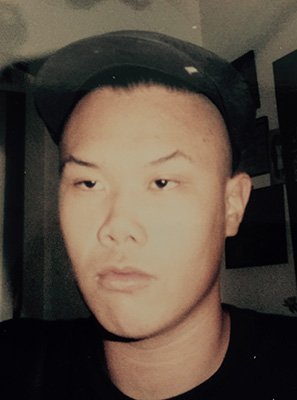
Joël B. Tan in 1988 North Hollywood, art school drop out for AIDS activism (Photo courtesy of Joël B. Tan)
The Wing has limited appeal for connoisseurs of Asian-American paintings predating surrealism. Until the civil rights movement, people of color were generally excluded from the canon of Western art. It makes sense that Wing art emphasizes historical artifacts, such as clothing and utensils, from the Asian-American experience at street level.
Wing’s leaders have had no need of art history degrees unless the history happened in their lifetimes. Until Asian American artists build up a body of work spanning multiple movements to fill their galleries, familiarity with social movements would be most useful. In this respect, Mr. Tan is the human for the moment. During his tenure, he intends to build up the Wing’s capabilities as a “cultural park” through its longtime affiliation with the U.S. National Park Service and Smithsonian Institution.
Mālama Pono! (Take care of yourself in Hawaiian)
Mr. Tan was born in Manila. He was the only child of Antonina Barraquiel from the Pandacan District of Manila and Jaime Tan from the City of Naga in the Bicol Region. At the age of eight, he emigrated with his parents to Southern California.
His mother and father died in their mid-fifties from what he called the family curse of obesity and diabetes. A dread of a premature demise motivates him to exercise, pay attention to his wellbeing and diet, and never scrimp on sleep. “A relaxed lifestyle makes me a better leader,” claims the trim optimist.
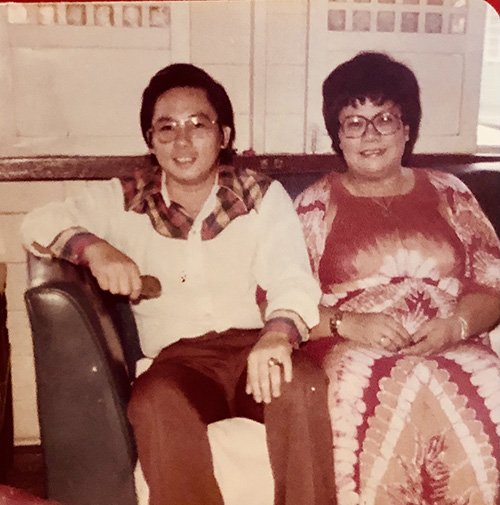
Jaime Tan (father) and Antonina Barraquiel (mother) at the Barraquiel family home Pandacan, 1974 (Photo courtesy of Joël B. Tan)
Mr. Tan Keeps His Tan
Trading the Aloha lifestyle for the suicide gray skies of the Pacific Northwest wasn’t a bum deal for Mr. Tan. “I was attracted to the variety of four seasons,” he says.
This Seattle native didn’t have the heart to spoil his illusion with Seattle’s de facto two seasons: heavy dew and rainstorms. But I can’t argue with Mr. Tan’s preference for limitless choices in attire over Hawaii’s compulsory shorts and slippers. Seattleites know that the standard North Face rain jacket comes in five color combinations.
Let’s hope his husband, Stephen “Bunny” Hoffmann, has something resembling a Filipino sense of humor. Next year marks their tenth anniversary.
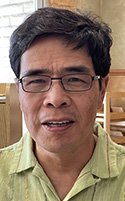
Anthony Maddela remains cancer-free, three months post-radiation. He notes that it’s OK to fill your bird feeder for wild birds since the new avian flu is a major threat to only poultry.
More articles from Anthony Maddela






No comments:
Post a Comment